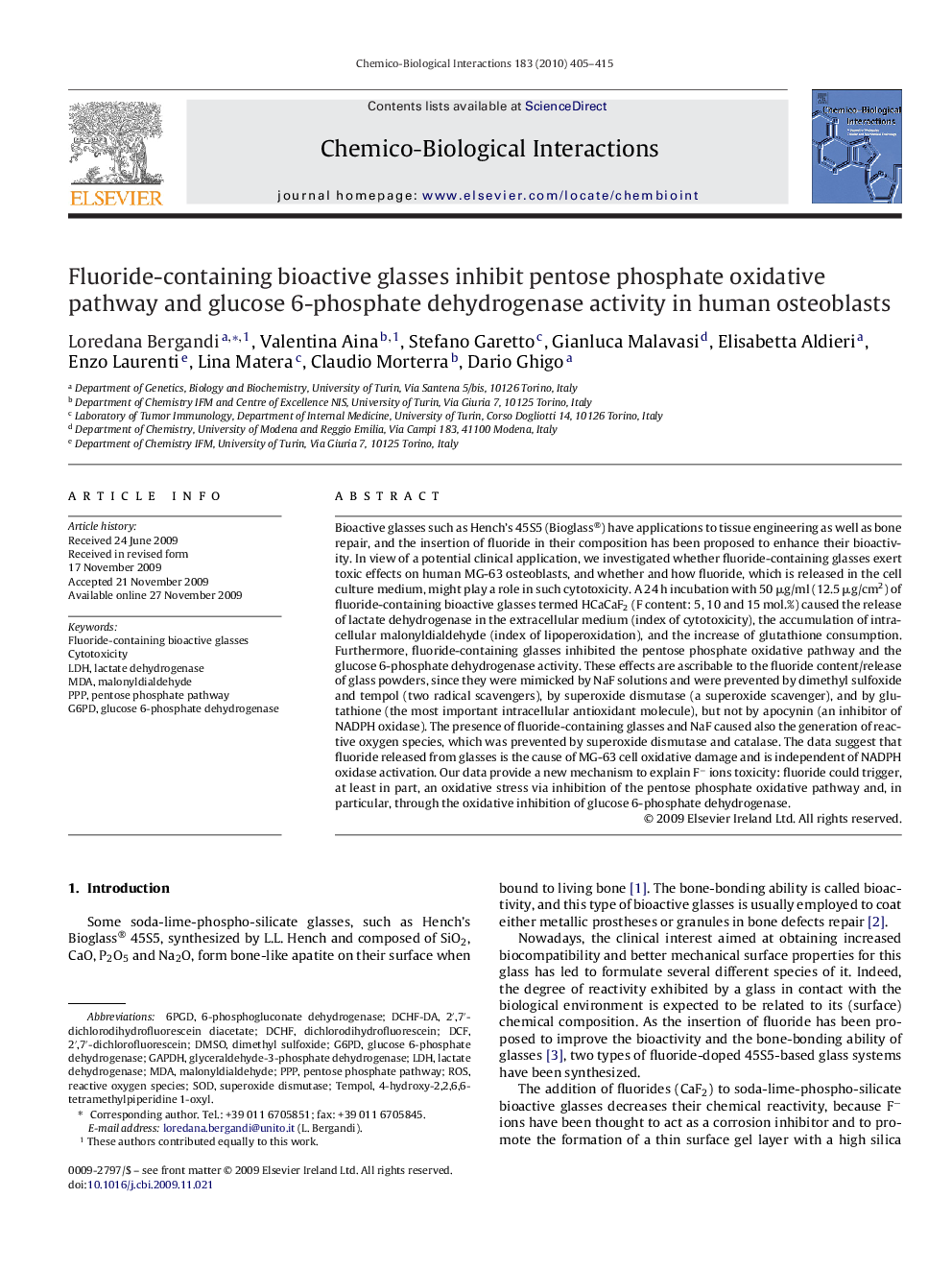| کد مقاله | کد نشریه | سال انتشار | مقاله انگلیسی | نسخه تمام متن |
|---|---|---|---|---|
| 2581250 | 1130181 | 2010 | 11 صفحه PDF | دانلود رایگان |

Bioactive glasses such as Hench's 45S5 (Bioglass®) have applications to tissue engineering as well as bone repair, and the insertion of fluoride in their composition has been proposed to enhance their bioactivity. In view of a potential clinical application, we investigated whether fluoride-containing glasses exert toxic effects on human MG-63 osteoblasts, and whether and how fluoride, which is released in the cell culture medium, might play a role in such cytotoxicity. A 24 h incubation with 50 μg/ml (12.5 μg/cm2) of fluoride-containing bioactive glasses termed HCaCaF2 (F content: 5, 10 and 15 mol.%) caused the release of lactate dehydrogenase in the extracellular medium (index of cytotoxicity), the accumulation of intracellular malonyldialdehyde (index of lipoperoxidation), and the increase of glutathione consumption. Furthermore, fluoride-containing glasses inhibited the pentose phosphate oxidative pathway and the glucose 6-phosphate dehydrogenase activity. These effects are ascribable to the fluoride content/release of glass powders, since they were mimicked by NaF solutions and were prevented by dimethyl sulfoxide and tempol (two radical scavengers), by superoxide dismutase (a superoxide scavenger), and by glutathione (the most important intracellular antioxidant molecule), but not by apocynin (an inhibitor of NADPH oxidase). The presence of fluoride-containing glasses and NaF caused also the generation of reactive oxygen species, which was prevented by superoxide dismutase and catalase. The data suggest that fluoride released from glasses is the cause of MG-63 cell oxidative damage and is independent of NADPH oxidase activation. Our data provide a new mechanism to explain F− ions toxicity: fluoride could trigger, at least in part, an oxidative stress via inhibition of the pentose phosphate oxidative pathway and, in particular, through the oxidative inhibition of glucose 6-phosphate dehydrogenase.
Journal: Chemico-Biological Interactions - Volume 183, Issue 3, 12 February 2010, Pages 405–415